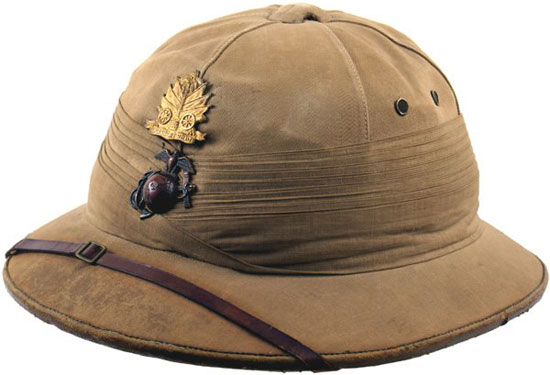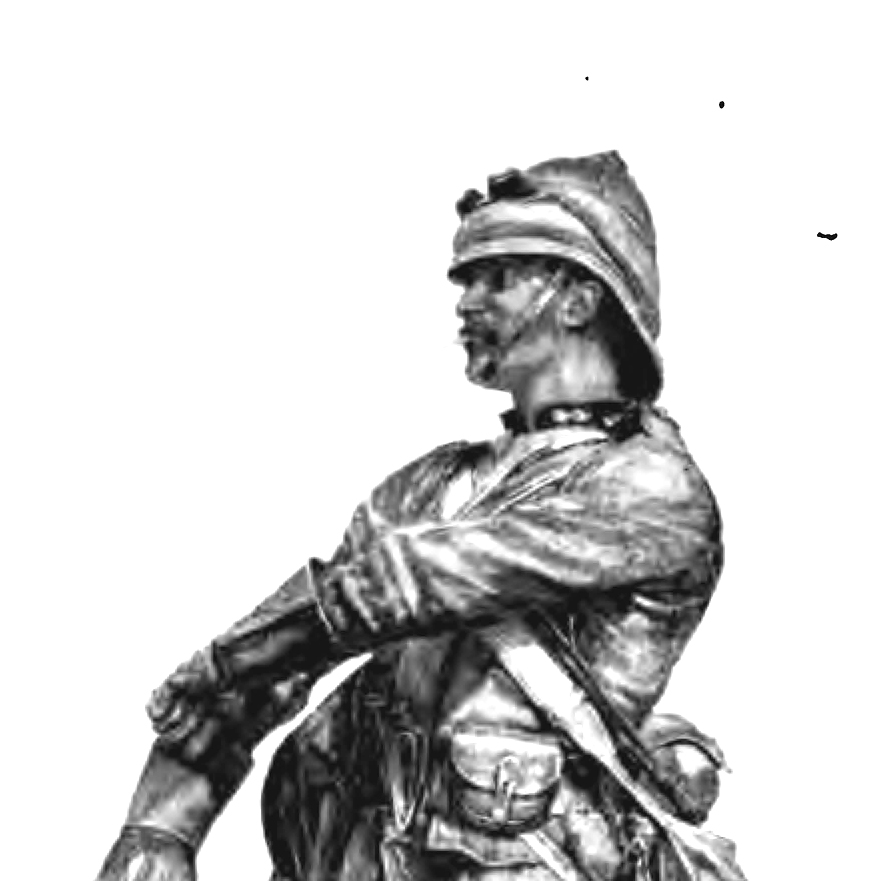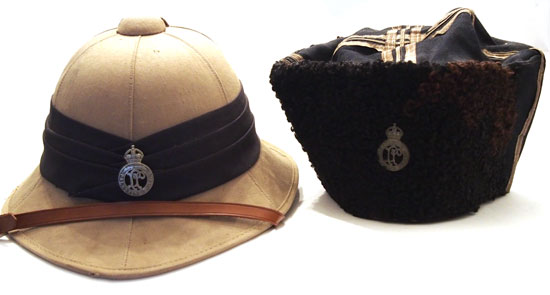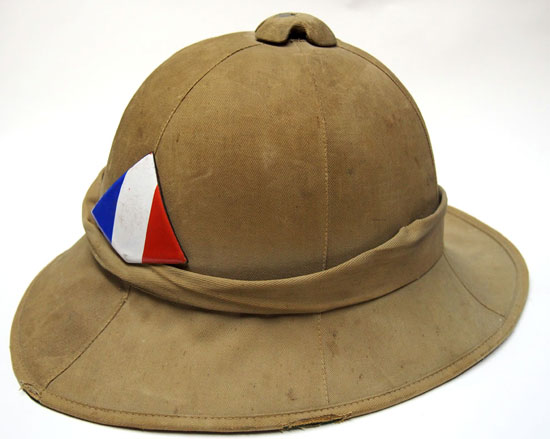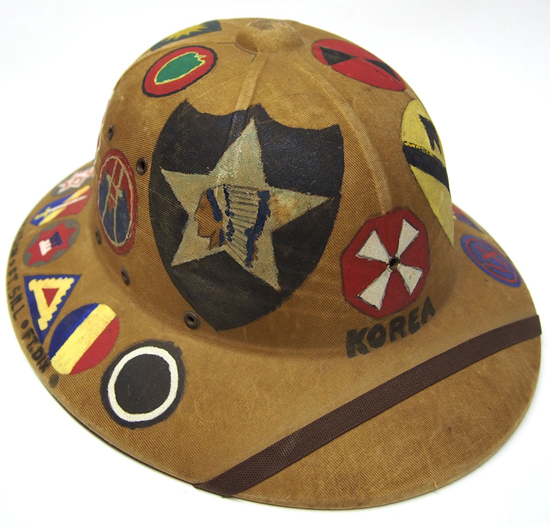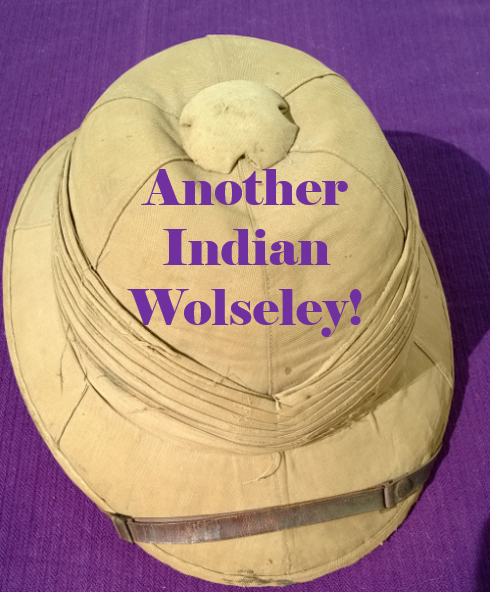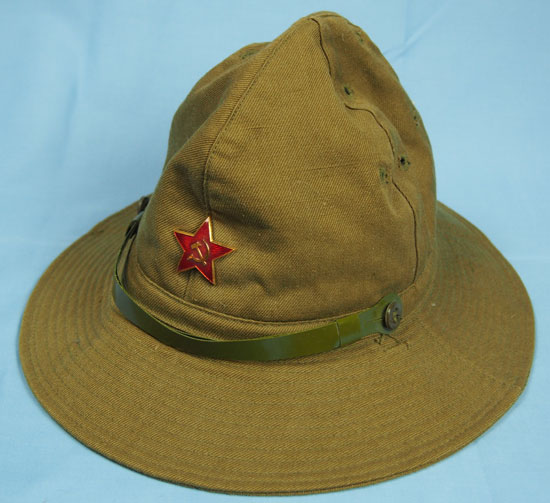
An early 1980s Soviet Afghanka cap of the type used during the summer months in the Soviet Union and by Soviet forces in Afghanistan (Collection of the Author)
While Imperial Russia and later the Soviet Union controlled vast territory, in each case it was truly an empire without far off colonies – apart from some brief adventures during the Imperial era and the Soviet’s proxy wars of course. However, the Soviets did utilize a number of summer uniforms including light weight khaki colored tunics and other clothing. Yet it wasn’t until the 1980s that a true form of “summer headgear” was developed.
This was the Afghanka hat – a type of boonie hat – that was utilized by the Red Army following the 1979 Invasion of the Soviet Union. The hat was developed with the other Afghanka uniforms and equipment, which was needed as the rugged countryside of the Central Asian nation was known for its extreme hot daytime temperatures in the summer and its equally bitter cold nights in the winter months. The boonie hat was developed to keep the rays of the sun off the wearer’s head and out of his eyes. Continue reading

